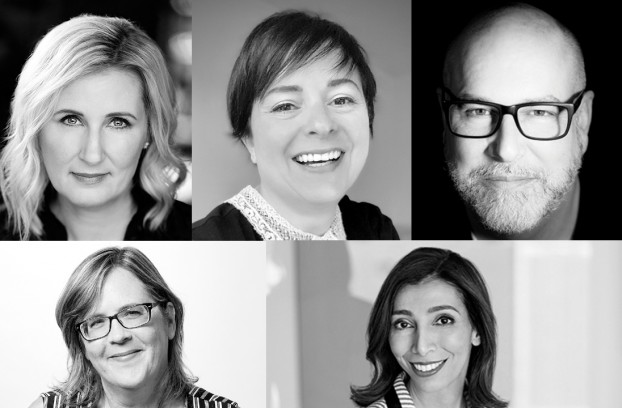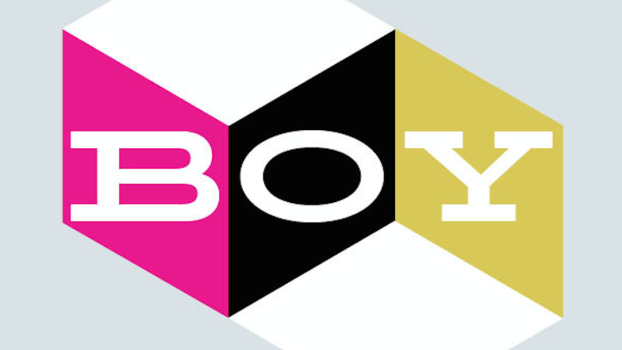Clockwise from top left: Kruger’s Susan Irving, MediaCom’s Grace Ahlberg, Leo Burnett’s Brent Nelsen, Canadian Tire’s Eva Salem and Starcom’s Christine Saunders.
This story originally appeared in the Nov/Dec 2020 issue of strategy. Check back next week for part two of the conversation.
The certain uncertainty of today means having to scenario plan your way out of the pandemic. Marketers are forced to craft a new brand script with a new consumer cast. How much planning is enough? Or how much forecasting is too much? Whatever happened to good ol’ intuition?
Strategy and Media in Canada “sat down” with marketers, media execs and strategists over Zoom to discuss how to predict an unpredictable future in our final roundtable for 2020.
How are you balancing long-term planning in the face of continued uncertainty?
Christine Saunders, president at Starcom: Last year, we would have talked about three-year plans. I can’t imagine writing a three-year plan now. I think long-term planning is for 2021.
Eva Salem, VP marketing at Canadian Tire: When you’re a large organization, you have to plan out multiple years in advance. Everything from inventory to supply chain, these are massive things that require a lot of time and planning. Balancing between those things has been a challenge.
Saunders: It’s also made us question all of our processes and our structures. Maybe it’s the right time to ask, “Is this the right way of doing things?” We can’t reinvent while in the fire, but it’s interesting, when you talk about future planning, supply lines and distribution, these are long-term things. I think everyone’s questioning the way things were done.
Brent Nelsen, CSO, Leo Burnett: I think the pandemic has affected clients differently. Some brands are grappling with long-term questions, [like], “If everyone banks online, do I even need a branch?” Scenario planning has made a star-struck return.
Susan Irving, CMO at Kruger Products: When consumers started pantry-loading in February, [Kruger was] just getting ducks in a row, cancelling advertising and having to rewrite the whole back-end of our plans. We were in crisis mode, but then we hired Deloitte to help, and now our planning is scenario planning. Depending on where the economy is going, across the entire business, we have a mild plan, a moderate plan and a severe plan. We are now ready and can pivot depending on where the pandemic goes.
But I think it’s funny, because we all write three-year plans, we all write annual plans, but I’m sure I could look at each of you and ask, “Have you ever been in a year in which the plan you wrote was the one you executed?” It took a pandemic for all of us to realize that, yes, you need a three-year strat plan – but I think we all know that plans change every three months.
Salem: And even the objectives have changed so much. We’re being asked in some situations to throttle back demand and lead-generation because we don’t want to attract too many people to stores. Problems we’ve never had before!
Grace Ahlberg, SVP, head of business insights & analytics at MediaCom: What I found interesting is that it’s forced us to take a step back and question things. I love the fact that we’re back to being curious. With established brands, you go on auto-pilot. You think you know your customers. COVID has forced us to question, “Do I really know this customer?” It’s almost like, back to the good ol’ planning days of when we did that relentless research.
So many marketers had specific business challenges, from keeping inventory stocked to calming shoppers, during the lockdown. How did you balance putting out fires while also focusing on the brand?
Salem: We tried to focus on channels that give us as much flexibility as possible. Buying and planning TV ads – when you’re not even sure if you’re going to have that product in stock for a few months – was really challenging. For the hard-working, SKU-specific stuff, we’re trying to keep it as digital as possible so we can be as responsive as possible. With traditional media, we’re focusing on brand-led messaging, on our role within the country, because the back-end stuff doesn’t matter as much.
Irving: Given that [Kruger’s] products are essential, we’ve kind of backed away from communicating functional benefits and innovation, because we don’t know if we’re going to have those products in stock.
One of the Cashmere ads we had on TV in Jan-Feb said it was “exclusively available everywhere.” Well, during the pandemic, we weren’t. Not until we caught up with demand. So we needed to pivot our strategy, and that’s how “Unapologetically Human” was born, where we talk about putting the consumer first. It was more of a strategic company and portfolio play.
Mid-pandemic, we hit “peak report period,” with studies looking at who the post-COVID consumer will be. How much have you been relying on this type of research?
Irving: We were getting reports from everyone, not just weekly but daily. We’re now in the long middle. We all knew that, come back-to-school, the second wave was going to hit, and unfortunately it has, but in that long middle, things have stabilized for us a bit, but we’re spending on research like never before.
Ahlberg: Staying close to the consumer is rule number one, COVID or no-COVID. We should never question whether or not we should be researching. How much, of course, is a different question.
Nelsen: What I’m finding hard to figure out is the variables; there are so many to account for. I like the idea of a long middle, but I don’t know if it’s leading to a long ending or a quick ending. Even the economists aren’t in consensus about the shape of the recession or recovery. The financial well-being of a lot of categories is dependent on gainful employment and an income that’s high enough for discretionary payment. No matter how much research I do, I think people are very fearful to talk about it. It’s very difficult to forecast.
Next week, the panel tackles testing and planning in an uncertain market.
























